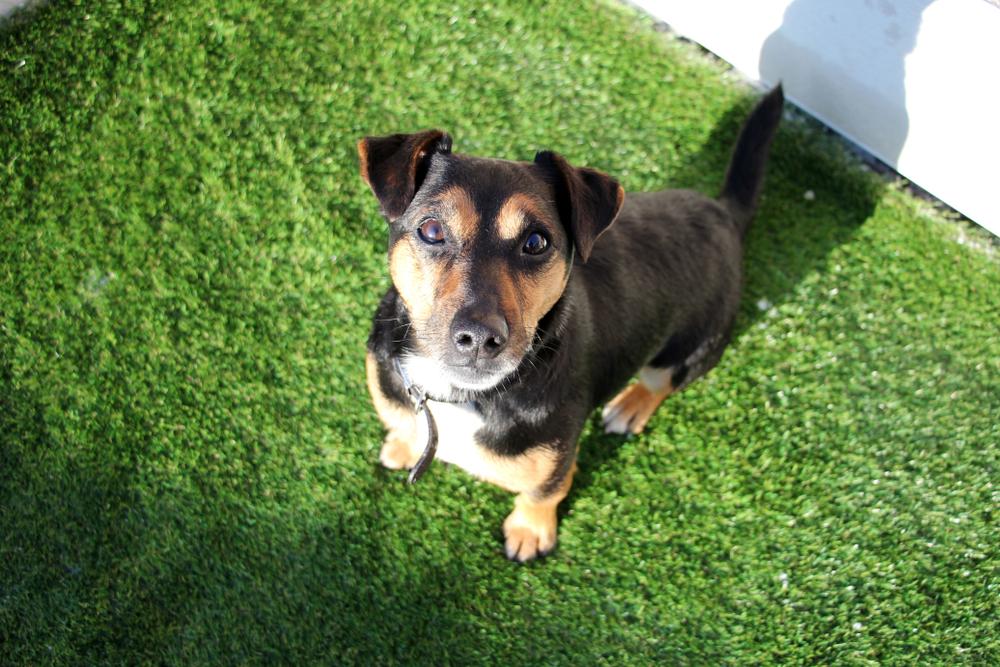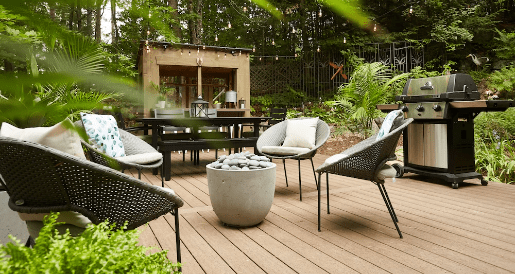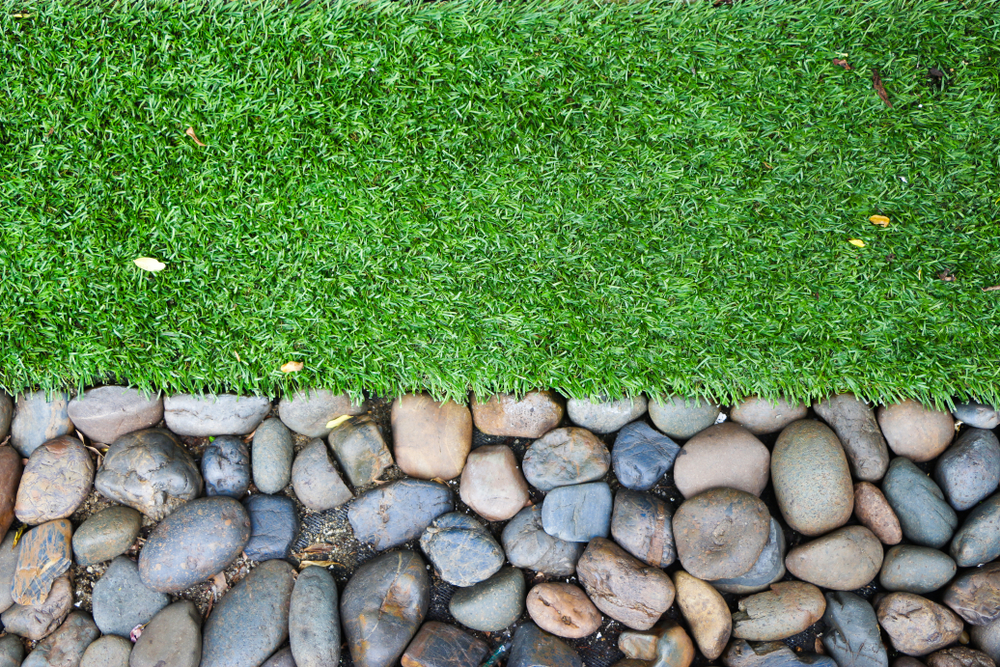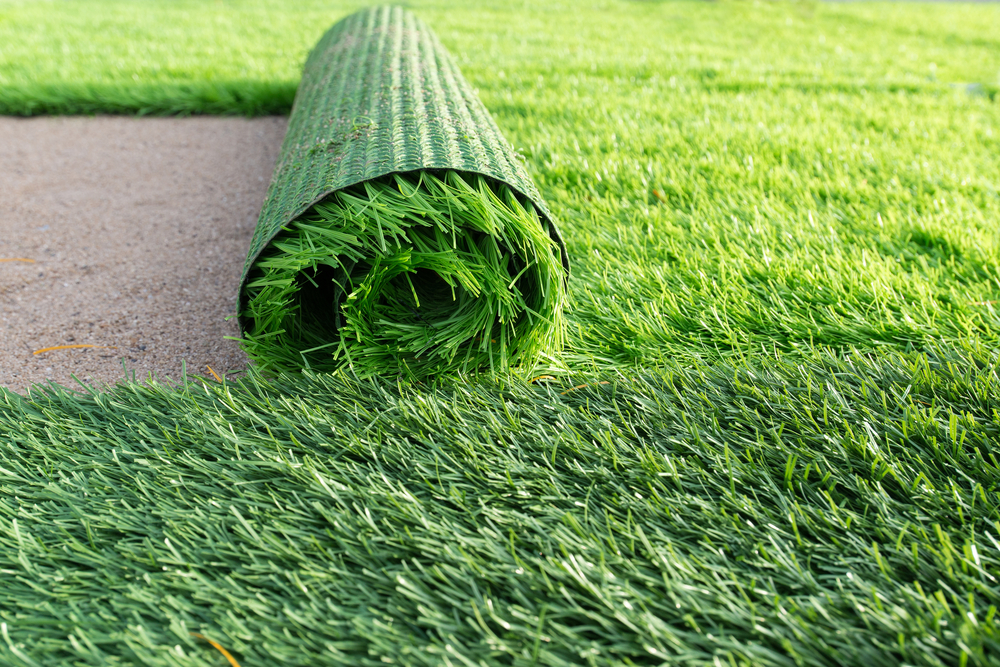Pet owners often grapple with the challenge of maintaining a pristine lawn while ensuring the happiness and safety of their furry friends. The thought of a clean, mud-free garden that stays green throughout the year is indeed appealing. It’s no surprise, then, that many are turning to artificial grass as an alternative to natural turf. But a pressing question remains: Is artificial grass bad for dogs? Let’s explore.
The Synthetic Turf Revolution
Artificial grass has come a long way from the rough-textured and obviously fake-looking turf of yesteryears. Modern variations are designed to look and feel almost indistinguishable from natural grass. The benefits are numerous: minimal maintenance, year-long lushness, and, importantly for pet owners, a surface that’s easy to clean.
Is Artificial Grass Bad for Dogs? Debunking Myths
One of the prevalent concerns dog owners have is the safety of synthetic turf for their pets. Let’s address the primary keyword concern head-on:
- Toxicity Concerns: Older versions of synthetic turf, particularly those made from latex or certain rubbers, might have contained toxic substances harmful to dogs. However, advancements in technology have birthed newer, non-toxic materials that are safe for pets. Always ensure the grass you’re buying is lead-free and made from dog-friendly materials.
- Heat Retention: Unlike natural grass, artificial turf can get hotter under direct sunlight. This can be uncomfortable for pets. However, many modern brands now offer heat-reflective technologies that keep the grass cooler.
- Traction and Texture: Some believe artificial grass can be too rough for dogs, leading to abrasions. However, premium varieties today mimic the softness of real grass, providing both comfort and traction for playful pups.
The Benefits of Artificial Grass for Dogs
- No More Muddy Paws: One of the biggest advantages of artificial turf is its cleanliness. After a rainy day, your dog can play outside without tracking mud into your home.
- Easy Clean-Up: Did your pet have an accident? No worries. Artificial grass is easier to clean than its natural counterpart. A quick hose down, and it’s as good as new.
- Durability: Dogs love to dig, and natural lawns suffer the consequences. With artificial grass, say goodbye to unsightly holes and bald patches.
- Pest Reduction: Fleas and ticks thrive in natural grass. Opting for a synthetic alternative can significantly reduce these pest problems.
Choosing the Right Artificial Grass for Your Pet
When shopping for synthetic turf, it’s essential to prioritize your pet’s needs:
- Look for Non-Toxic Materials: Always ensure the product is lead-free and made from materials that are safe for pets.
- Opt for Heat-Reflective Technologies: This ensures the grass remains cool, even in hot weather, for your pet’s comfort.
- Prioritize Drainage: Good drainage is essential to prevent waterlogging and facilitate easy clean-up after pet accidents.
- Choose a Soft Texture: While durability is essential, don’t compromise on texture. Your pet should find the grass comfortable under their paws.
Maintenance Tips for Artificial Grass with Pets
While artificial grass for pets offers a lot of conveniences, maintaining its pristine look with pets around does require some effort. Here’s how to ensure longevity and cleanliness:
- Regular Cleaning: Even though artificial grass is inherently low-maintenance, regular cleaning ensures it remains odor-free and hygienic for pets. A weekly rinse with a hose can help clear away dust, pollen, and other small debris.
- Spot Clean Accidents: For pet waste, solid waste should be picked up promptly and disposed of properly. Liquid accidents can be hosed down. For persistent smells, you can use a mixture of water and vinegar or enlist the help of enzyme cleaners designed specifically for pet odors.
- Brush the Turf: Over time, especially in high-traffic areas where your pet often plays, the grass blades might become flat. To restore its natural look, brush the turf occasionally with a soft-bristled broom.
- Avoid Harmful Chemicals: If you’re battling a stubborn stain or considering using weed killers or other garden chemicals, always ensure they’re pet-safe. Remember, what goes on the grass will inevitably come into contact with your pet.
- Check Regularly for Wear and Tear: While artificial grass is durable, nothing lasts forever. Regular inspections can help you spot areas that might become problematic.Addressing minor issues early on can prevent them from turning into more significant concerns.
Feedback from Other Pet Owners
Many pet owners have made the switch and never looked back. Here’s what some of them have said:
- “With artificial grass, I no longer worry about my dog coming inside with muddy paws. It’s been a game-changer!”
- “I was initially skeptical, but the ease of cleaning up after my pets on artificial turf has made me a believer. Plus, it looks green and gorgeous all year!”
- “Our older dog seemed to prefer the softness of the artificial grass. It’s gentle on her paws, and she loves lounging on it during sunny days.”
A Word on Environmental Impact
While we’ve primarily discussed the benefits of artificial grass, it’s essential to touch upon its environmental footprint. Synthetic turf doesn’t require watering, which conserves water. However, since it’s made of plastic, it doesn’t biodegrade. When considering artificial grass, weigh its long lifespan against its eventual disposal. Some companies are pioneering recycling programs for old turf, making it a more sustainable option.
Final Thoughts: Navigating the Green Revolution for Pet Owners
Artificial grass has come a long way from its humble beginnings. Today’s synthetic turf is not just a green patch in your backyard; it’s a testament to how human innovation can blend with nature to cater to our modern-day needs. For pet owners, in particular, this option has surfaced as a godsend, addressing mud, pests, and uneven terrains that natural lawns sometimes present.
Read about: The Advantages of Artificial Grass Over Natural Grass in Desert Climates
However, like all choices, it’s not without its considerations. The key is in the details. From selecting the highest quality grass designed for pets to understanding the best practices for maintenance, success lies in making informed decisions. It’s not just about asking, “Is artificial grass bad for dogs?” but rather “How can I ensure the artificial grass I choose is best for my pet?”
As sustainability becomes an ever-pressing concern, it’s also vital to consider the environmental impact. While artificial grass does have an eco-footprint due to its plastic nature, its long lifespan and potential for recycling make it a consideration worth its weight.
In the end, as pet owners, our primary responsibility is to the well-being and happiness of our furry friends. By merging this duty with our desires for convenience and aesthetics, we can create spaces that are both functional and beautiful. The right artificial grass can indeed become the perfect playground for your pet, marrying the best of both worlds.





